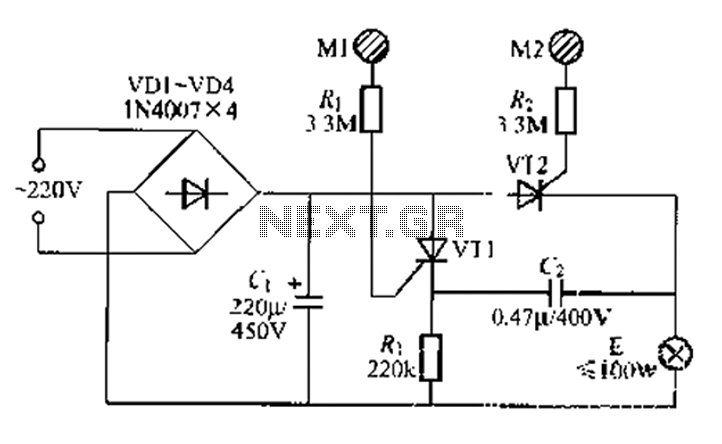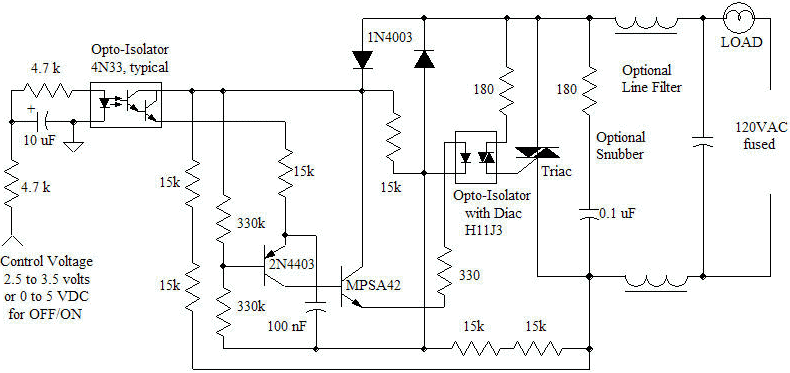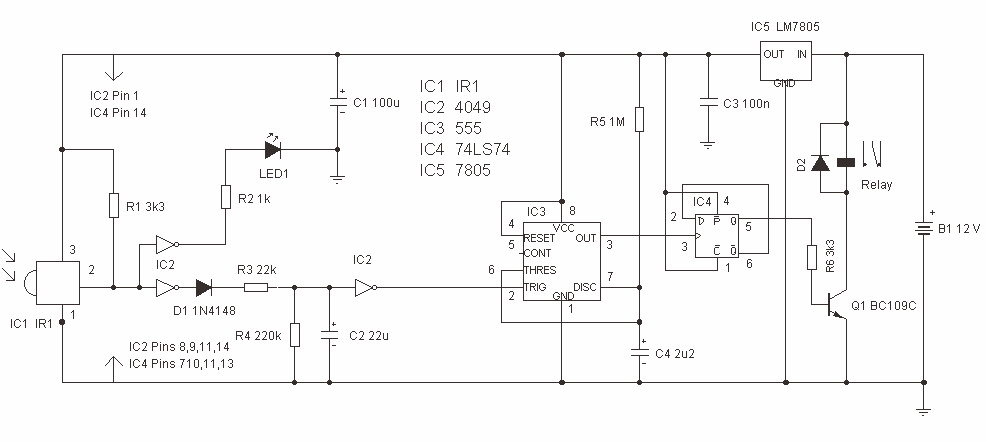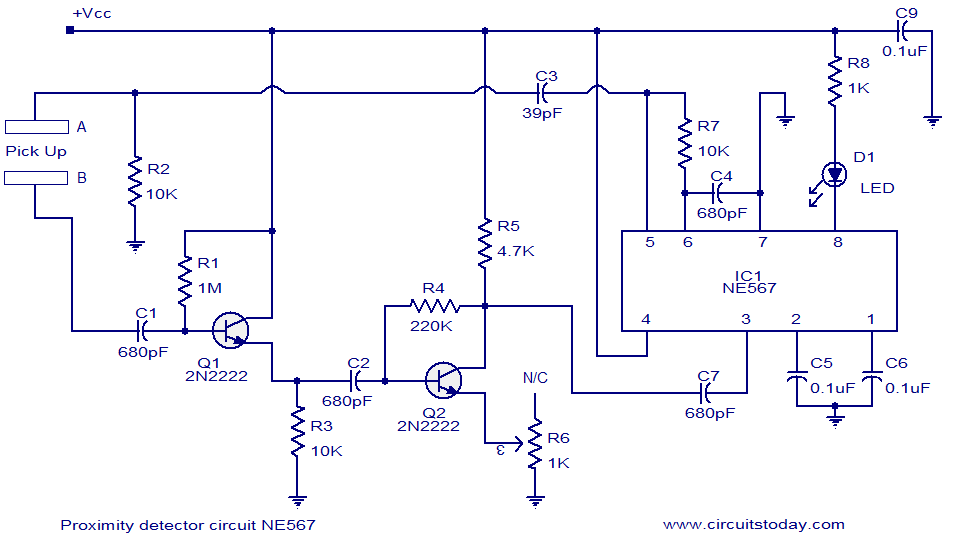
hall effect switch
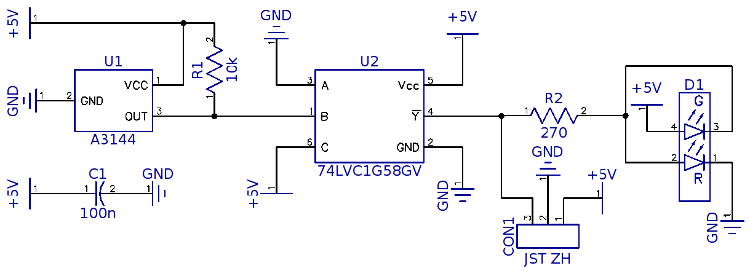
For the limit switches on a custom 3D printer being designed, contactless sensors will be utilized. Hall effect sensors, which are sensitive to magnetic fields, have been selected. There are three types of these sensors: the omnipolar hall sensor, which activates when a magnet is nearby; the unipolar sensor, which activates in the presence of a specific magnetic pole; and the bipolar hall effect sensor, which latches on with one pole and deactivates with the other. The chosen sensor for this circuit is the Allegro A3144, an unipolar sensor that is no longer manufactured but is readily available on eBay for under €0.20 each. The sensor comes in a miniature TO-92-like package. To visually indicate the sensor's status, two LEDs will be used: one for the triggered state and one for the off state. The A3144 has an open collector output, allowing an LED to be driven only when the sensor is activated. A buffer or inverter is necessary to drive both LEDs. One solution is to use an N-channel MOSFET for the off LED while connecting the triggered LED directly to the A3144's output. This configuration requires a resistor at the MOSFET's gate. Alternatively, a more compact solution is the 74LVC1G58, a configurable logic chip with three inputs, capable of ±24 mA output drive, and available in a small SOT23-6 package. When configured as an inverter, its pin arrangement allows for easy soldering on a standard breadboard. The schematic for this simple hall effect switch is available. SMD components are used throughout, except for the hall effect sensor and connector. All SMD components can be soldered easily on a standard breadboard. The dual LED is in a 1210 SMD package, while all resistors and capacitors are in 0603 format. The connector is a small JST ZH, modified to fit into the breadboard. A custom board was not created due to the limited number of components. Connections are made with solid core 30 AWG (approximately 0.25 mm diameter) PTFE coated wire, which is advantageous for SMD work as it does not melt when exposed to soldering heat, preventing accidental short circuits. A mounting hole for an M3 bolt is located in the center of the board. The final board dimensions are 19 mm x 14 mm. A custom two-layer layout was also designed, with all components on the top layer, resulting in dimensions of 17 mm x 11.5 mm, indicating that the breadboard layout is close to the minimum area required. The circuit operates reliably with various magnets. The A3144 features built-in hysteresis, preventing output oscillation when a magnet is near the trigger distance. Although not necessary for this application, the 74LVC1G58 includes Schmitt-trigger inputs, allowing the use of an analog output hall sensor instead of the A3144 while maintaining hysteresis on the output without further modifications.
The circuit design incorporates the Allegro A3144 unipolar Hall effect sensor, which is positioned to detect the proximity of a magnet for limit switch applications in a 3D printer. The sensor's output is connected to the gate of an N-channel MOSFET, which controls the off-state LED, while the triggered LED is connected directly to the sensor output. This design allows for visual feedback of the sensor's status. The SMD components are arranged to optimize space and facilitate soldering on a breadboard, which is beneficial for prototyping.
The 74LVC1G58 logic chip can be configured to serve as an inverter, providing an alternative method for driving the LEDs with fewer components. This chip's output capability of ±24 mA ensures that both LEDs can be driven effectively. The choice of a JST ZH connector allows for compact connections while maintaining reliability in the circuit. The PTFE coated wire used for connections enhances durability and minimizes the risk of damage during soldering.
The overall dimensions of the board, along with the mounting hole for an M3 bolt, contribute to a compact and efficient design suitable for integration into a 3D printer. The inclusion of hysteresis in the A3144 sensor enhances the stability of the circuit by preventing false triggering due to minor fluctuations in magnetic field strength. The final layout not only meets the functional requirements but also optimizes the use of space, making it an effective solution for implementing limit switches in a custom 3D printer design.For the limit switches on a custom 3D printer I`m designing, I want to try out some contactless sensors. I have chosen to use hall effect sensors, which are sensitive to a magnetic field. There are three different types of these sensors available. First, there`s the omnipolar hall sensor, which turns on when a magnet comes in its vicinity. Next is the unipolar one, which turns on as long as a specific magnetic pole is close enough, which pole depends on the sensor. Finally, there`s the bipolar hall effect sensor, which latches on when one pole comes close and only turns off when it senses the other pole.
The sensors that I am using for my circuit is an Allegro A3144, an unipolar sensor. These are no longer manufactured, however eBay is chock full of them and they can be had for less than ‚¬0. 20 each. They come in a miniature TO-92-like package, as seen in the picture below. As a visual indication of the sensor`s status, I want two LEDs, one each for the triggered and off state.
Since the A3144 has an open collector output, driving a LED from the output is only possible when the sensor is triggered. In order to drive both LEDs either a buffer or an inverter is required. One option is to use an N-channel MOSFET for the off LED and connect the triggeredLED straight to the A3144`s output.
Apart from the MOSFET, this would also require a resistor to the MOSFET`s gate. A alternative which uses less parts is the versatile 74LVC1G58. This is a configurable logic chip with 3 inputs, which has ±24 mA output drive and comes in a tiny SOT23-6 package. Best of all: when configured as an inverter, the pins are grouped together such that the chip can be soldered on a standard breadboard.
You can find the schematic for my simple hall effect switch below. I used SMD components for everything, except the hall effect sensor and the connector. Although tiny, all of the SMD components can be soldered without any problem on a standard breadboard. The dual LED comes in a 1210 SMD package, all resistors and capacitors are 0603 format. The connector is a tiny JST ZH and had to be cut up a bit, so that the leads could be forced into the breadboard.
I didn`t bother with a custom board, due to the small number of components. Connections are made with solid core 30 AWG (‰ 0. 25 mm diameter) PTFE coated wire. I really like the PTFE coating for SMD work, since it won`t melt when heated by a soldering iron, so you don`t get accidental short circuits. In the middle of the board is a mounting hole for an M3 bolt. The final board size is 19 mm x 14 mm. For fun I routed a custom two-layer layout (all components on the top layer) which came out to 17 mm x 11.
5 mm, so this breadboard layout is pretty close to the minimum area. Below is a picture of the board on a 50c coin for size comparison. The circuit triggers very reliably for a handful of magnets I have lying around. The A3144 has build-in hysteresis, which is really nice. Without it, the output would oscillate when a magnet is just at the trigger distance. Although not necessary in this case, the 74LVC1G58 has Schmitt-trigger inputs, so you could use an analog output hall sensor instead of the A3144 and would also get hysteresis on the output without having to change anything else. See the image below for the circuit both in off and triggered state. 🔗 External reference
The circuit design incorporates the Allegro A3144 unipolar Hall effect sensor, which is positioned to detect the proximity of a magnet for limit switch applications in a 3D printer. The sensor's output is connected to the gate of an N-channel MOSFET, which controls the off-state LED, while the triggered LED is connected directly to the sensor output. This design allows for visual feedback of the sensor's status. The SMD components are arranged to optimize space and facilitate soldering on a breadboard, which is beneficial for prototyping.
The 74LVC1G58 logic chip can be configured to serve as an inverter, providing an alternative method for driving the LEDs with fewer components. This chip's output capability of ±24 mA ensures that both LEDs can be driven effectively. The choice of a JST ZH connector allows for compact connections while maintaining reliability in the circuit. The PTFE coated wire used for connections enhances durability and minimizes the risk of damage during soldering.
The overall dimensions of the board, along with the mounting hole for an M3 bolt, contribute to a compact and efficient design suitable for integration into a 3D printer. The inclusion of hysteresis in the A3144 sensor enhances the stability of the circuit by preventing false triggering due to minor fluctuations in magnetic field strength. The final layout not only meets the functional requirements but also optimizes the use of space, making it an effective solution for implementing limit switches in a custom 3D printer design.For the limit switches on a custom 3D printer I`m designing, I want to try out some contactless sensors. I have chosen to use hall effect sensors, which are sensitive to a magnetic field. There are three different types of these sensors available. First, there`s the omnipolar hall sensor, which turns on when a magnet comes in its vicinity. Next is the unipolar one, which turns on as long as a specific magnetic pole is close enough, which pole depends on the sensor. Finally, there`s the bipolar hall effect sensor, which latches on when one pole comes close and only turns off when it senses the other pole.
The sensors that I am using for my circuit is an Allegro A3144, an unipolar sensor. These are no longer manufactured, however eBay is chock full of them and they can be had for less than ‚¬0. 20 each. They come in a miniature TO-92-like package, as seen in the picture below. As a visual indication of the sensor`s status, I want two LEDs, one each for the triggered and off state.
Since the A3144 has an open collector output, driving a LED from the output is only possible when the sensor is triggered. In order to drive both LEDs either a buffer or an inverter is required. One option is to use an N-channel MOSFET for the off LED and connect the triggeredLED straight to the A3144`s output.
Apart from the MOSFET, this would also require a resistor to the MOSFET`s gate. A alternative which uses less parts is the versatile 74LVC1G58. This is a configurable logic chip with 3 inputs, which has ±24 mA output drive and comes in a tiny SOT23-6 package. Best of all: when configured as an inverter, the pins are grouped together such that the chip can be soldered on a standard breadboard.
You can find the schematic for my simple hall effect switch below. I used SMD components for everything, except the hall effect sensor and the connector. Although tiny, all of the SMD components can be soldered without any problem on a standard breadboard. The dual LED comes in a 1210 SMD package, all resistors and capacitors are 0603 format. The connector is a tiny JST ZH and had to be cut up a bit, so that the leads could be forced into the breadboard.
I didn`t bother with a custom board, due to the small number of components. Connections are made with solid core 30 AWG (‰ 0. 25 mm diameter) PTFE coated wire. I really like the PTFE coating for SMD work, since it won`t melt when heated by a soldering iron, so you don`t get accidental short circuits. In the middle of the board is a mounting hole for an M3 bolt. The final board size is 19 mm x 14 mm. For fun I routed a custom two-layer layout (all components on the top layer) which came out to 17 mm x 11.
5 mm, so this breadboard layout is pretty close to the minimum area. Below is a picture of the board on a 50c coin for size comparison. The circuit triggers very reliably for a handful of magnets I have lying around. The A3144 has build-in hysteresis, which is really nice. Without it, the output would oscillate when a magnet is just at the trigger distance. Although not necessary in this case, the 74LVC1G58 has Schmitt-trigger inputs, so you could use an analog output hall sensor instead of the A3144 and would also get hysteresis on the output without having to change anything else. See the image below for the circuit both in off and triggered state. 🔗 External reference
